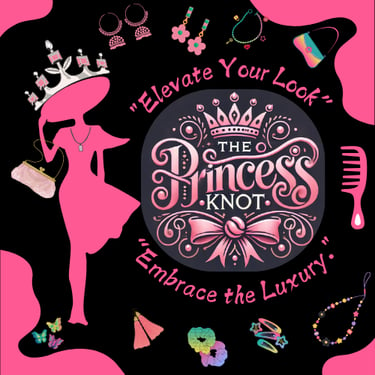10 Essential Tips for Choosing Jhumkas to Match Your Saree on Traditional Festivals
3/28/20252 min read


Introduction
Traditional Indian festivals are a time of celebration, family gatherings, and elaborate dressing. A saree is often the primary choice of attire for many women during these occasions, and complementing it with the right accessories is crucial. Jhumkas, a traditional earring style, can elevate the overall look of a saree. However, selecting the perfect jhumka can be overwhelming. In this article, we present ten essential tips to choose jhumkas that match your saree beautifully during traditional festivals.
1. Consider the Saree Color
The first step in selecting jhumkas is to consider the color of your saree. If you are wearing a vibrant or heavily adorned saree, opt for subtle jhumkas that will not overpower the outfit. Conversely, if your saree has a muted tone, choose statement jhumkas that add a pop of color and glamour.
2. Match the Fabric
The fabric of your saree should guide your choice of jhumkas. For instance, silk sarees pair well with traditional gold jhumkas, while cotton sarees may look better with lightweight metal or terracotta designs. Ensuring that the jhumkas complement the saree's material can create a harmonious and elegant appearance.
3. Pay Attention to Embellishments
Consider the embellishments present on your saree. Jhumkas that feature similar detailing will create a coordinated look. For embellished sarees, solid-colored jhumkas can provide balance, while intricately designed jhumkas can enhance the festive feel if the saree is simpler.
4. Think About Your Hairstyle
Your hairstyle can impact how well your jhumkas will be showcased. Loose hairstyles might require longer jhumkas to stand out, while tight buns or updos can be complemented with smaller, more elegant jhumkas. Choose a style that highlights your accessories effectively.
5. Consider Your Face Shape
Different jhumka styles suit different face shapes. For example, women with round faces often look great in long, dangling jhumkas, while those with angular features might prefer rounded designs. Understanding your face shape can help you select jhumkas that enhance your natural beauty.
6. Personal Style Matters
Your personal style should also dictate your choice. If you prefer a modern look, opt for contemporary jhumka designs that feature unconventional shapes or materials. In contrast, if you favor a classic aesthetic, traditional gold or silver jhumkas are an excellent choice.
7. Coordinate with Other Accessories
Jhumkas are just one of the accessories to consider when dressing up for a festival. Match your jhumkas with other jewelry pieces such as necklaces or bangles to create a cohesive look. Avoid clashing styles that may detract from the overall elegance of your ensemble.
8. Comfort is Key
While the aesthetic of jhumkas is essential, comfort should not be overlooked. Ensure that the jhumkas you choose are lightweight and easy to wear, especially if you plan to be in them for extended periods during festivals.
9. Plan for the Occasion
Different festivals may call for different levels of embellishment. For intimate gatherings, simpler jhumkas may be appropriate, while for larger public celebrations, more ornate pieces can make a statement. Tailor your choice to fit the occasion.
10. Experiment and Have Fun
Lastly, don’t hesitate to experiment with your options. Sometimes unexpected pairings can lead to stunning results. Have fun accessorizing your saree with jhumkas, creating a look that is uniquely you!
Conclusion
Selecting the right jhumkas to match your saree during traditional festivals is essential for achieving a well-rounded look. By considering aspects like color, fabric, and personal style, you can enhance your festive attire and celebrate with confidence.
The Princess Knot
A Unit of NEHA TRADERS
Stylish accessories for every woman's wardrobe.
Quick Links
contact@theprincessknot.in
+91 83001 51443
Copyright © 2025 The Princess Knot | All rights reserved.


